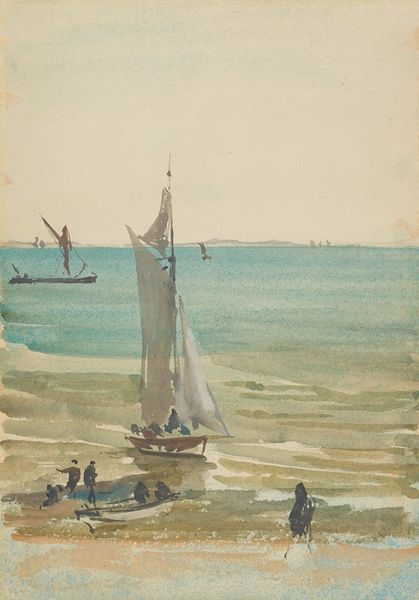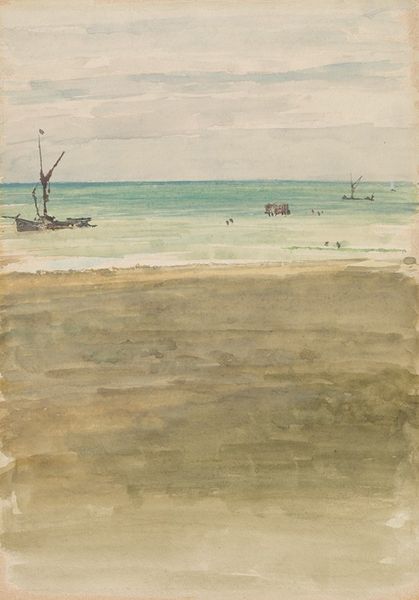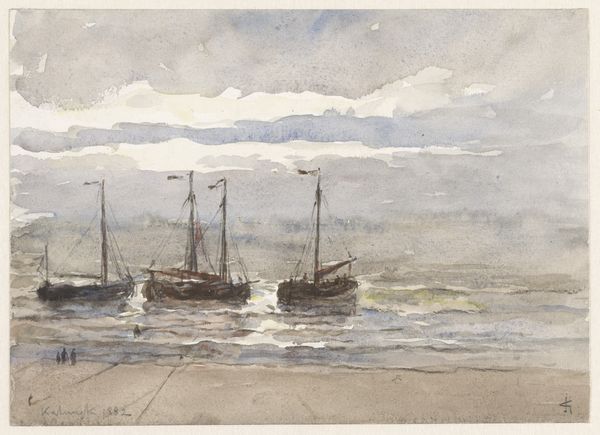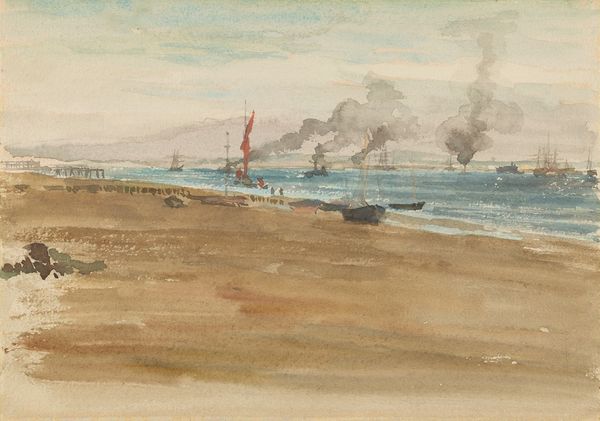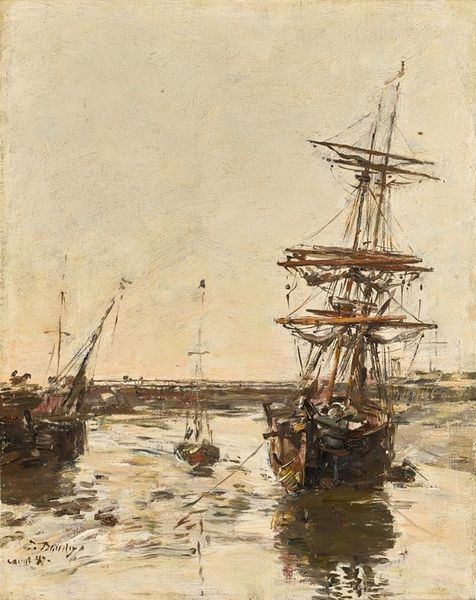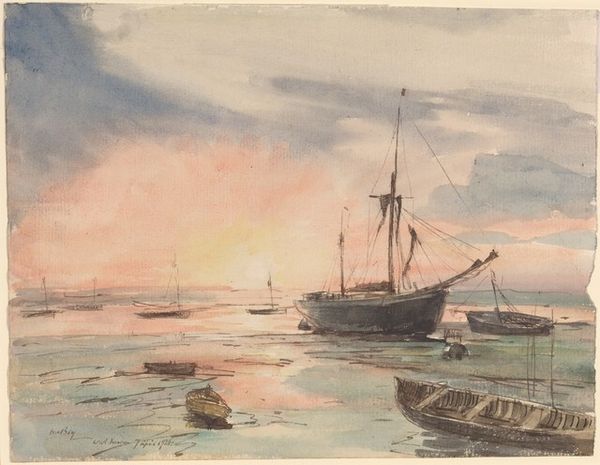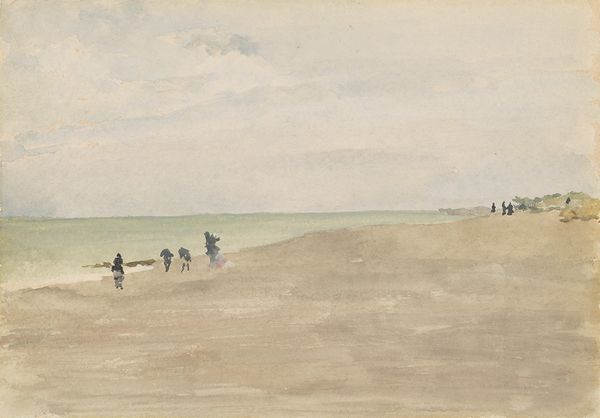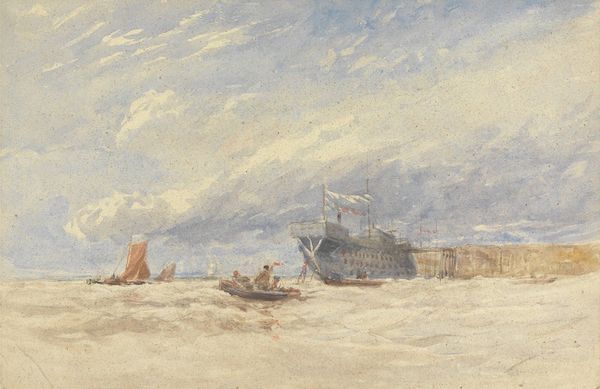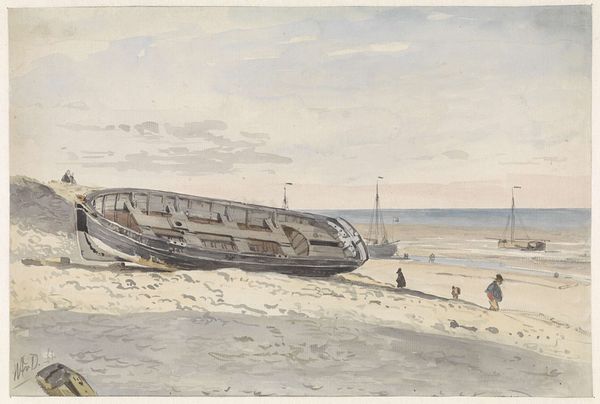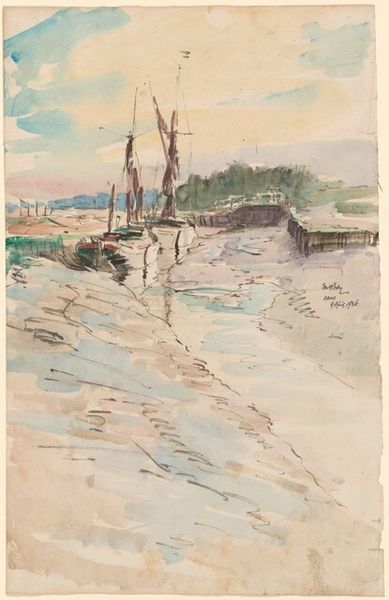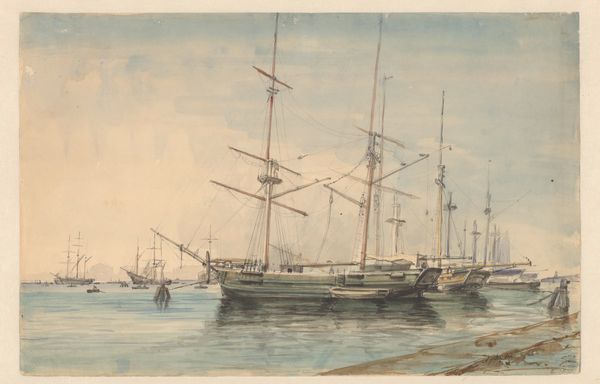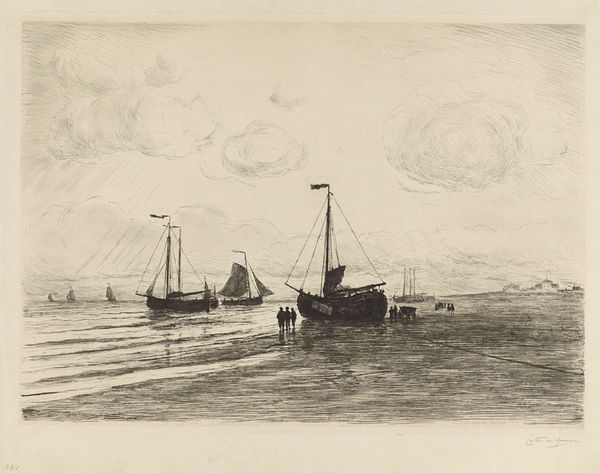
plein-air, watercolor
#
impressionism
#
plein-air
#
landscape
#
oil painting
#
watercolor
#
cityscape
#
post-impressionism
#
watercolor
Copyright: Public Domain: Artvee
James McNeill Whistler made this watercolor painting, The Anchorage, likely in the late 19th century, using thin washes that lend the scene a breezy, atmospheric quality. Notice the large sailing ships in the distance, contrasted by the figure of a man walking the beach. The ships signify Britain’s global maritime power at the peak of its Empire. But Whistler was more interested in the aesthetic qualities of the scene than any grand patriotic statement. We know this because his more famous painting, *Nocturne in Black and Gold: The Falling Rocket*, provoked the Victorian art critic John Ruskin to accuse Whistler of “flinging a pot of paint in the public’s face”. Whistler sued Ruskin for libel and won a hollow victory that revealed how the aesthetic assumptions of the art establishment were being challenged in this period. To better understand Whistler, scholars consult exhibition reviews, personal correspondence, and of course, the art itself. We can appreciate how art reflects the values and tensions of its time.
Comments
No comments
Be the first to comment and join the conversation on the ultimate creative platform.
